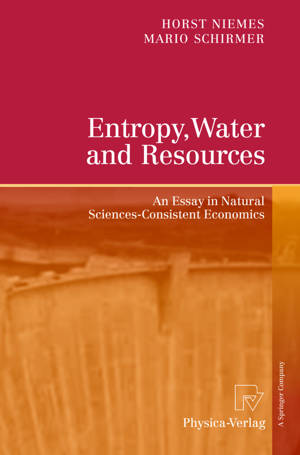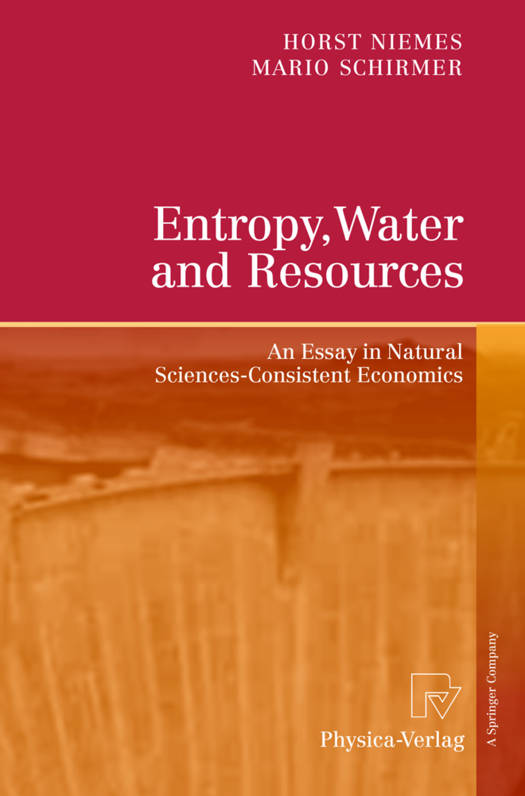
- Retrait gratuit dans votre magasin Club
- 7.000.000 titres dans notre catalogue
- Payer en toute sécurité
- Toujours un magasin près de chez vous
- Retrait gratuit dans votre magasin Club
- 7.000.0000 titres dans notre catalogue
- Payer en toute sécurité
- Toujours un magasin près de chez vous
Entropy, Water and Resources
An Essay in Natural Sciences-Consistent Economics
Horst Niemes, Mario Schirmer
Livre relié | Anglais
105,45 €
+ 210 points
Format
Description
This book lies at the intersection of natural sciences, economics, and water en- neering and is in line with the long tradition of environmental economics at the University of Heidelberg. In the 1970s, the Neo-Austrian Capital Theory was developed using the fundamental laws of thermodynamics as a common language between the natural and social sciences. Niemes (1981) integrated the dynamic and irreversibility characteristics of the natural environment into the Neo-Austrian c- ital theory. Faber et al. (1983, 1987, 1995) then extended this interdisciplinary approach further to create a comprehensive, dynamic, environmental resource model. Over the last 3 decades, the theoretical foundations of environmental economics have been modi ed and there have been an impressive variety of applications. This book aims to reduce the gaps between economic theory, natural sciences, and engineering practice. One of the reasons these gaps exist is because economic assumptions are used to construct dynamic environmental and resource models, which are not consistent with the fundamental laws of the natural sciences. Another reason for the gap might be the distance between academic theory and real world situations. Based on an extended thermodynamic approach, the authors explain which economic assumptions are acceptable for constructing a dynamic model that is consistent with the natural sciences. In particular, the special role of water in the production and reproduction activities will be considered as an integral component.
Spécifications
Parties prenantes
- Auteur(s) :
- Editeur:
Contenu
- Nombre de pages :
- 219
- Langue:
- Anglais
Caractéristiques
- EAN:
- 9783790824155
- Date de parution :
- 19-06-10
- Format:
- Livre relié
- Format numérique:
- Genaaid
- Dimensions :
- 156 mm x 234 mm
- Poids :
- 503 g

Les avis
Nous publions uniquement les avis qui respectent les conditions requises. Consultez nos conditions pour les avis.






